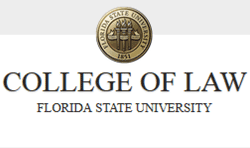Document Type
Article
Publication Date
2022
Publication Title
Columbia Journal of Law & The Arts
Publication Title (Abbreviation)
Colum. J. L. Arts
Volume
45
Issue
2
First Page
171
Abstract
Trademark law recognizes that the same word can mean different things in different commercial contexts. Legal protection might extend to two or more owners who use the same symbol (like Delta) to indicate different sources of disparate goods or services, such as airlines and faucets. Generally, only those uses that threaten to confuse consumers-the use of similar symbols on identical or related goods-are subject to legal sanction.
But the law extends special protection to famous trademarks, not only against confusing use, but also against dilution: non-confusing use that blurs or tarnishes the distinctiveness of the famous mark. The result of protection against blurring is that the law treats the famous mark as if the sole proper use of the term in the commercial context is to designate goods and services from the famous mark's owner.
Protection against dilution extends only to famous marks, but courts and scholars apply differing standards for assessing fame. Nonetheless, the trend over time has been to treat fame as a threshold requiring both sufficient renown-the famous mark must be a household name-and relatively singular use.
This article argues that corpus linguistic analysis can provide evidence of whether a mark is sufficiently prominent and singular to qualify for anti-dilution protection. Corpus linguistics detects language patterns and meaning from analyzing actual language use. This article draws data primarily from two large, publicly accessible databases (corpora) to investigate whether litigated trademarks are both prominent and unique. Courts and parties can consider frequency evidence to establish or refute prominence, and contextual evidence like concordance and collocation to establish relative singularity.
Corpus evidence has some advantages over standard methods of assessing fame. Corpus evidence is cheaper to generate than survey evidence but may be equally probative. Corpus analysis can help right-size dilution litigation: A litigant could estimate the prominence and singularity of an allegedly famous mark using corpus evidence prior to discovery and better predict whether the mark should qualify for anti-dilution protection. Judges should be able to rely on the results of corpus analysis with reasonable confidence. Additionally, corpus evidence can show use of a mark over time, providing courts with tools to assess when a mark first became famous, a question that a survey generated for litigation cannot readily answer.
Recommended Citation
Jake Linford and Kyra Nelson,
Trademark Fame and Corpus Linguistics, 45
Colum. J. L. Arts
171
(2022),
Available at: https://ir.law.fsu.edu/articles/835
